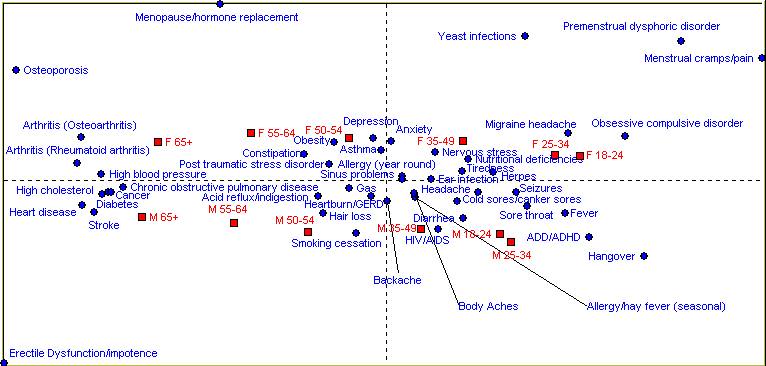
Health Conditions in the USA
The consequences of scientific and technological progress are many. While industrial progress has improved the economic well-being of most people, there are also deleterious environmental effects (such as pollution and contamination) that have adverse impact upon the physical well-being. At the same time, progress in the fields of medicine and healthcare have produced greater knowledge about the identification, prevention and treatment of diseases.
At the beginning of 2001, while the bubble that was the new dot.com economy burst and many economic areas seemed to be mired in a recession, one bright spot is the continued expansion of the pharmaceutical industry. People can lose their jobs or spend less money on inessentials, but they will not neglect their health care. Furthermore, the growth of the pharmaceutical industry has been fueled by the growth of the Over-The-Counter (OTC) and the Direct-To-Consumer (DTC) channels.
We will now cite some data from the OTC/DTC Pharmaceutical Study conducted by the research company MARS (Multimedia Audience Research Systems). This is a mail survey of 23,705 adults completed during the first quarter of 2001. The content of this survey covers media usage, health conditions, pharmaceutical usage, opinions and attitudes about health issues, and demographics.
For this note, we will show the relationship between the most prevalent ailment conditions and age/sex. Following the maxim "a picture is worth a thousand words", we provide a correspondence map between the two sets of variables. The computer program has no semantic understanding of the theoretical concepts, but nevertheless the program lined up the demographics by age from the youngest people on the right and the oldest people on the left, and by males on the bottom half and females on the top half. For each demographic group, the ailments that are most prevalent will appear in the near vicinity.

This map is a succinct summary of the connection between ailment conditions and age/sex. The sadness is that humankind is accompanied by ailments and sufferings from birth to death for the entire journey.
According to Census 2000, there are now 35,305, 818 (=12.5%) Hispanic or Latino persons in a total population of 281,421,906 persons. Among adults (18 years or older), there are now 22,963,559 (=11.0%) Hispanic or Latino persons in a total population of 209,128,094 persons. By any account, Hispanics have become a significant group. According to the MARS OTC/DTC Pharmaceutical Study, with respect to healthcare situations and issues, Hispanics display certain similarities and differences from the rest of the population. Here are a few key findings:
![]()
REFERENCES
(posted by Roland Soong, 5/17/2001)
(Return to Zona Latina's Home Page)